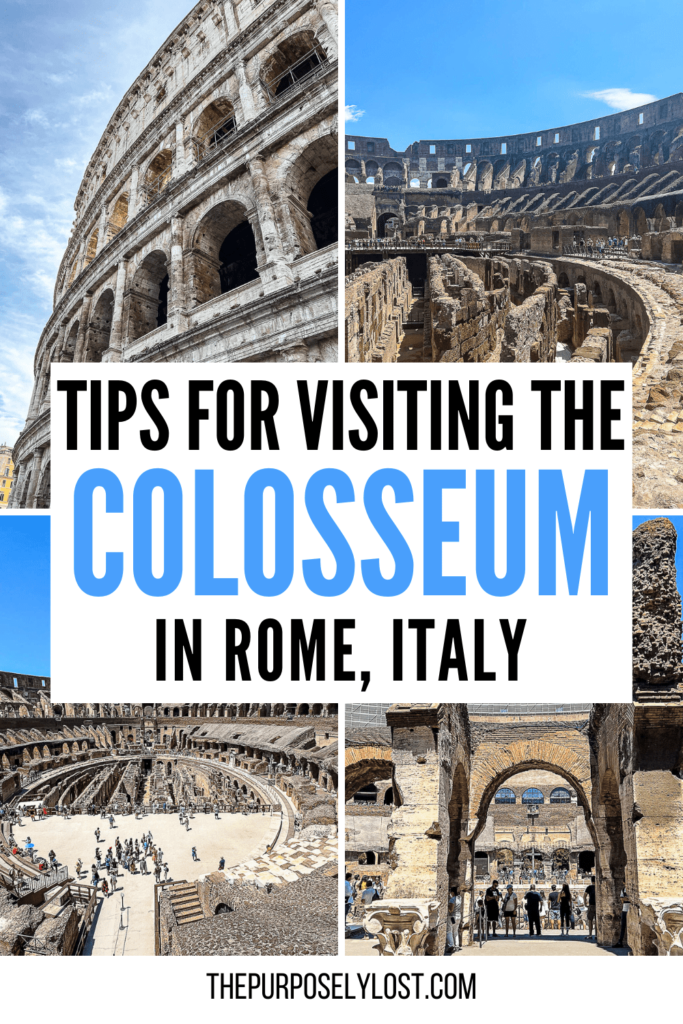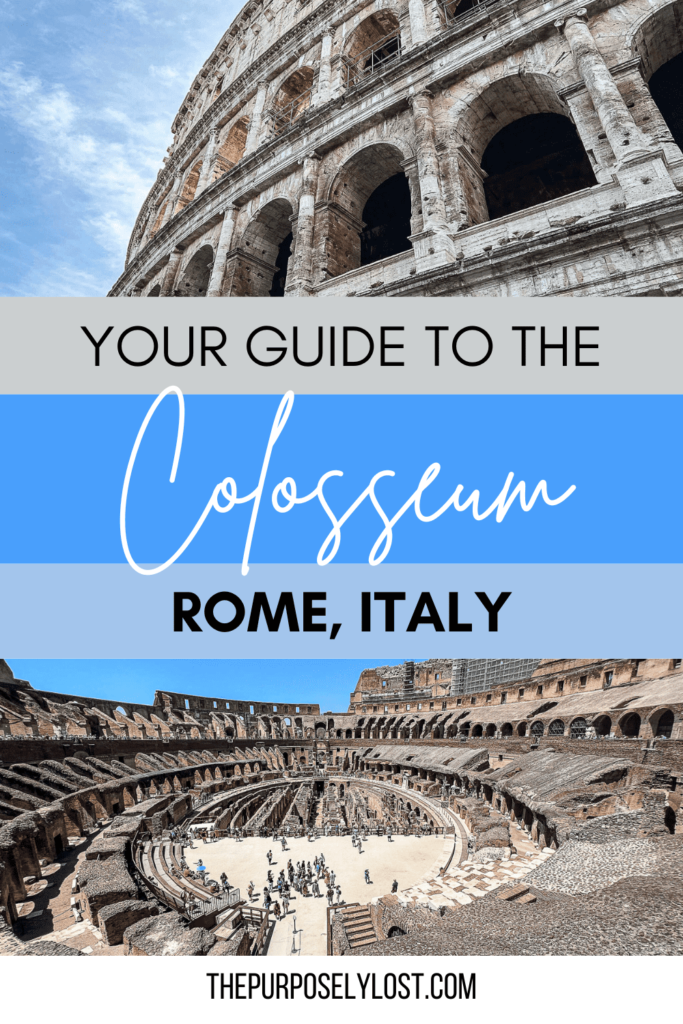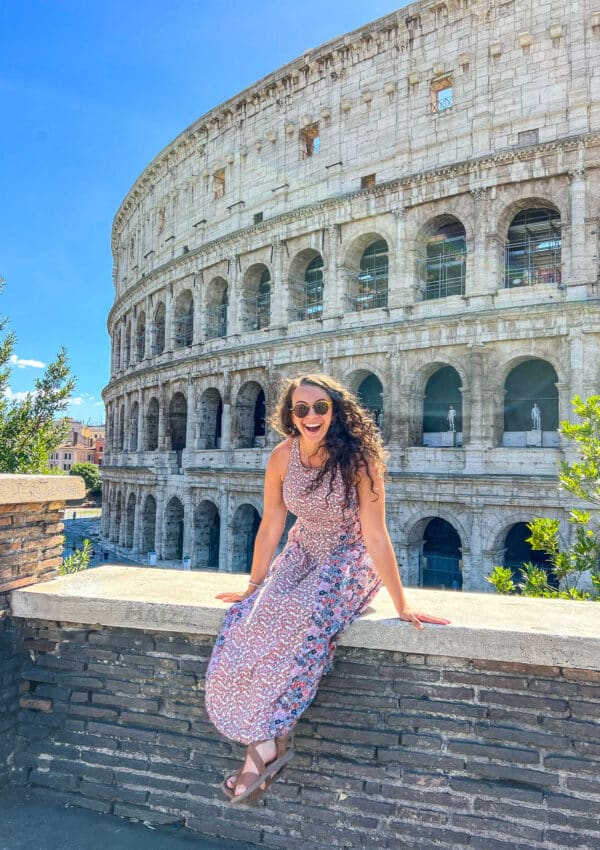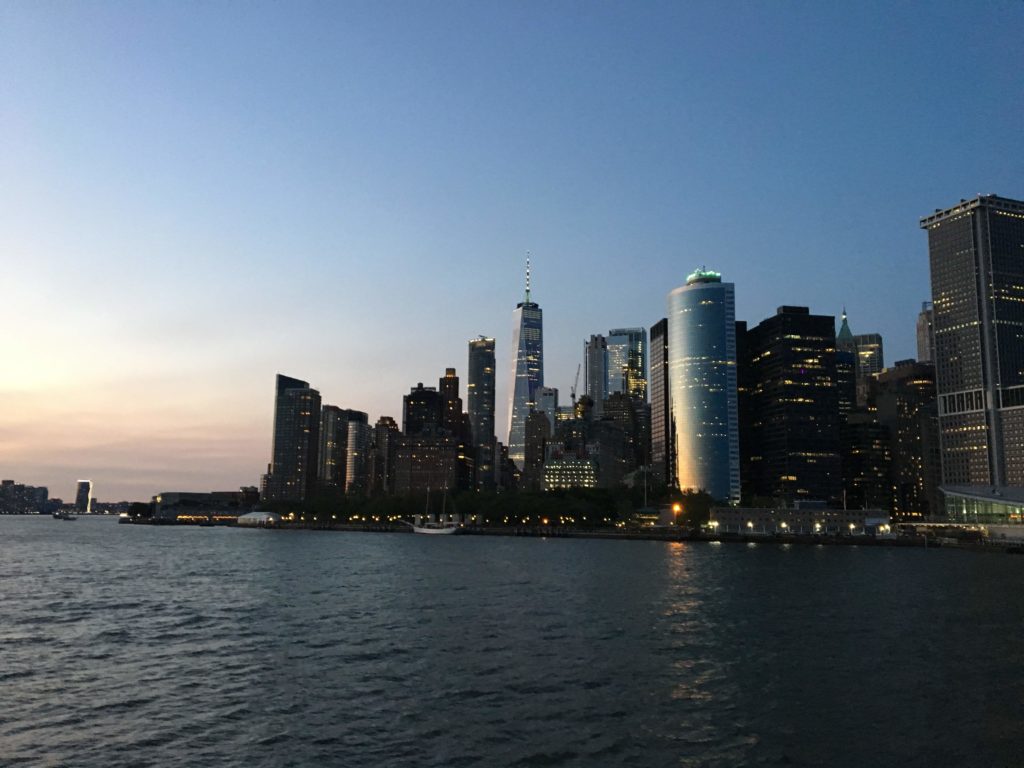Contents
- 1 History of the Colosseum
- 2 Where is the Colosseum located?
- 3 How did the Colosseum get its name?
- 4 How to Get to the Colosseum
- 5 The Colosseum’s Hours of Operation
- 6 How to Buy Tickets to Visit the Colosseum
- 7 How long should someone plan to spend visiting the Colosseum?
- 8 Accessibility at the Colosseum
- 9 Tips for Entering the Colosseum
- 10 Areas to See Inside the Colosseum
- 11 Landmarks to See Near the Colosseum
- 12 Tips for Visiting the Colosseum
- 12.1 Do some research before you go
- 12.2 To avoid pickpockets, pay attention to your surroundings
- 12.3 Early morning is the best time for photography
- 12.4 Check the weather forecast before leaving for your tour of the Colosseum
- 12.5 Bring a reusable water bottle with you
- 12.6 Make sure to come back at night
- 13 When can you visit the Colosseum for free?
- 14 What to do After Visiting the Colosseum
This post may contain affiliate links! I will receive a commission, at no extra cost to you, if you purchase something recommended here.
No trip to Rome, Italy, is complete without visiting the Colosseum. This incredible UNESCO World Heritage Site was the largest amphitheater throughout the Roman empire.
It’s one of the most iconic symbols of Ancient Rome that persists even today, with more than a million people each year stepping inside to see the popular tourist attraction.
I’ve visited the Colosseum several times now with different tours on my own and with family and friends. There are definitely some helpful hints to know before going your first time.
If you’re planning to visit the historic structure the next time you’re in Rome, here are my top tips for visiting the Colosseum.
Editor’s Choice
History of the Colosseum

The Colosseum is a monument to the glory of ancient Rome. Built during the reign of the Roman Emperor Vespasian and completed by his son Emperor Titus, it was established as a place of entertainment for the masses. Construction only took about 10 years, from 71 to 81 C.E., to build the first three levels of the structure.
It was used as a venue for gladiatorial contests, executions, and public spectacles. When the Colosseum officially opened, the Romans celebrated with 100 days of shows in the stadium. In modern times, the Colosseum remains an important tourist attraction. It has been included in the New Seven Wonders of the World list.
Where is the Colosseum located?

The Colosseum is located in the heart of Rome, Italy, at Piazza del Colosseo, 1. For those traveling by car–which I do not recommend–the Colosseum’s G.P.S. coordinates are 41.8902°N, 12.4922 °E.
How did the Colosseum get its name?
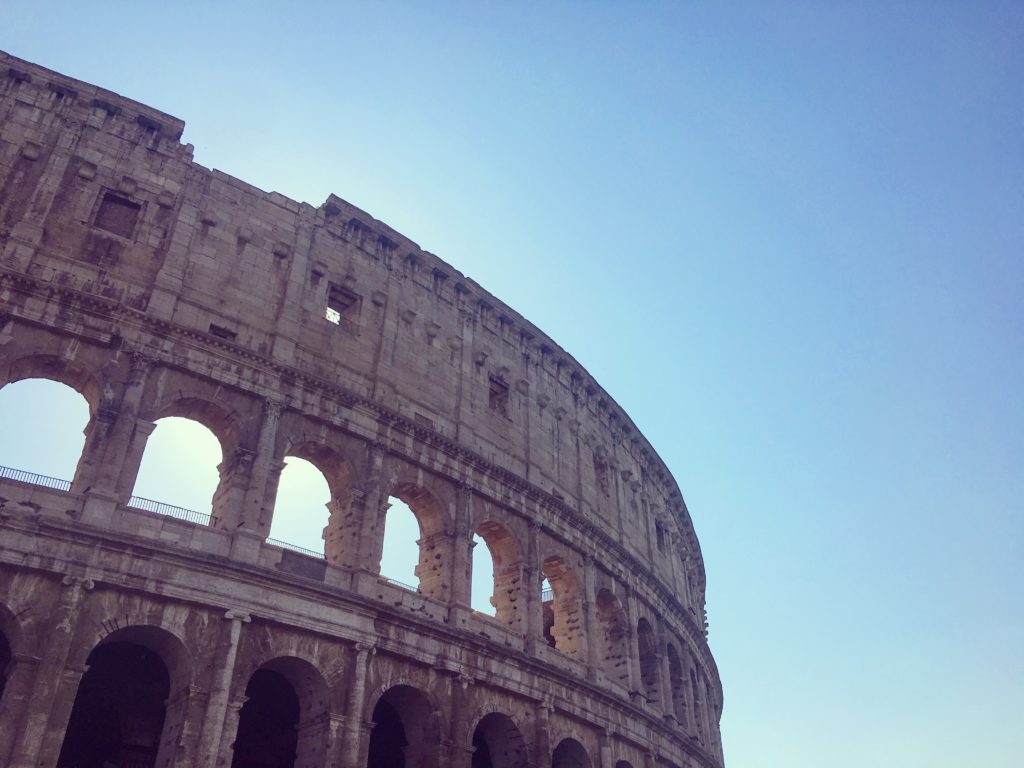
The Romans knew this structure as Flavian’s Amphitheater because the Flavian family dynasty of Roman emperors were the ones who made the project possible.
However, outside the arena stood a massive statue that Roman’s called “Colossus,” which translates to big or huge. Colossus then became Colosseum.
How to Get to the Colosseum
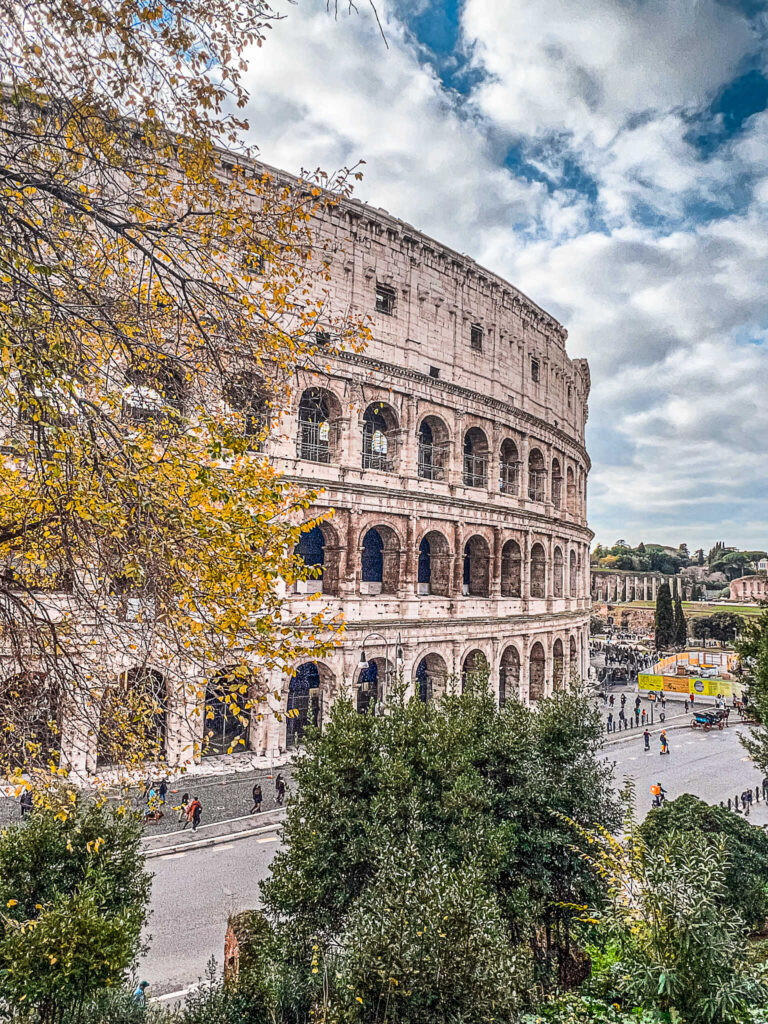
The Colosseum is located near the Roman Forum, connected to the Colosseo metro station. There are many ways to reach the Colosseum, but some require more than one train or bus ride.
If you plan to use public transportation to reach the Colosseum, download and use the free app Citymapper. This app tells you precisely what routes you can get from point A to point B and how long each will take. Thankfully, the app supports the Rome transit system so that you can have up-to-date information in real-time.
The Colosseum’s Hours of Operation

The Colosseum is currently open every day, with the last entry time one hour before closing. Since their hours change depending on the time of year, you can check for their hours of operation or changes for holidays on their official website.
When you purchase your tickets in advance online, it tells you what time you booked your entrance tickets, and you’ll only be allowed to head inside during that time slot.
How to Buy Tickets to Visit the Colosseum
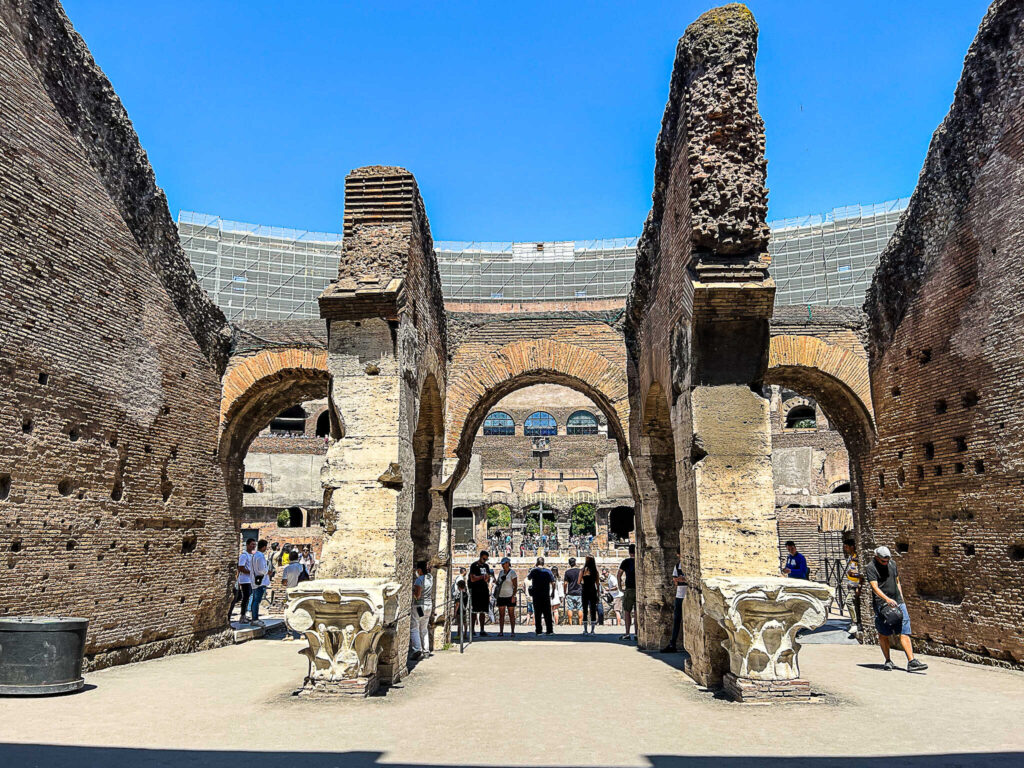
There are many different types of experience tickets available for visiting the Colosseum:
- Guided group tours
- Self-guided tours
- Private guided tours
- Tickets that include special access to other areas of the Colosseum Tickets that have the Roman Forum
- A combination of these ticket types
All of these types of tickets are valid for entry into this significant ancient landmark. Depending on what you want to see, tickets for the Colosseums can become very expensive.
Especially during the heavy tourism season, if there’s something specific you want to see, you need to book your admission ticket in advance. Don’t be like me and book your tickets the day before, hoping they’ll still be available!
To avoid being scammed, I highly recommend purchasing your tickets to enter the Colosseum online before you go. Basically, any ticket option you’re interested in is available through GetYourGuide or Viator. Both are a trustworthy travel experience partners that I book through all the time. I’ve never had a bad experience with them here in Rome or anywhere else in the world I’ve used them.
Both providers have apps that keep your available tickets for you, even when you’re offline, so you don’t have to worry about the hassle of finding a printer or taking a screenshot of your email on the off-chance it won’t load at the fateful moment.
Editor’s Note: The last time I visited the Colosseum, this is the exact tour I booked through GetYourGuide. Our tour guide was incredibly knowledgable with specific details on the Colosseum, as well as the Roman Forum, and Palatine Hill. This tour includes skip-the-line access to all three of these sites, and access to the Colosseum’s Arena floor.
However, if you’re already planning to buy a Rome sightseeing pass, your ticket to the Colosseum is already included as part of your offerings on every pass.
Another budget-friendly Colosseum ticket is the one offered by Coopculture, the official organization behind the landmark. Their official ticket is valid for 24 hours from first use. It includes one entrance per ticket for the Colosseum, the Roman and Imperial Forum, and Palatine Hill. However, it doesn’t have any special access areas, and you’ll be charged an additional online booking fee.
How long should someone plan to spend visiting the Colosseum?
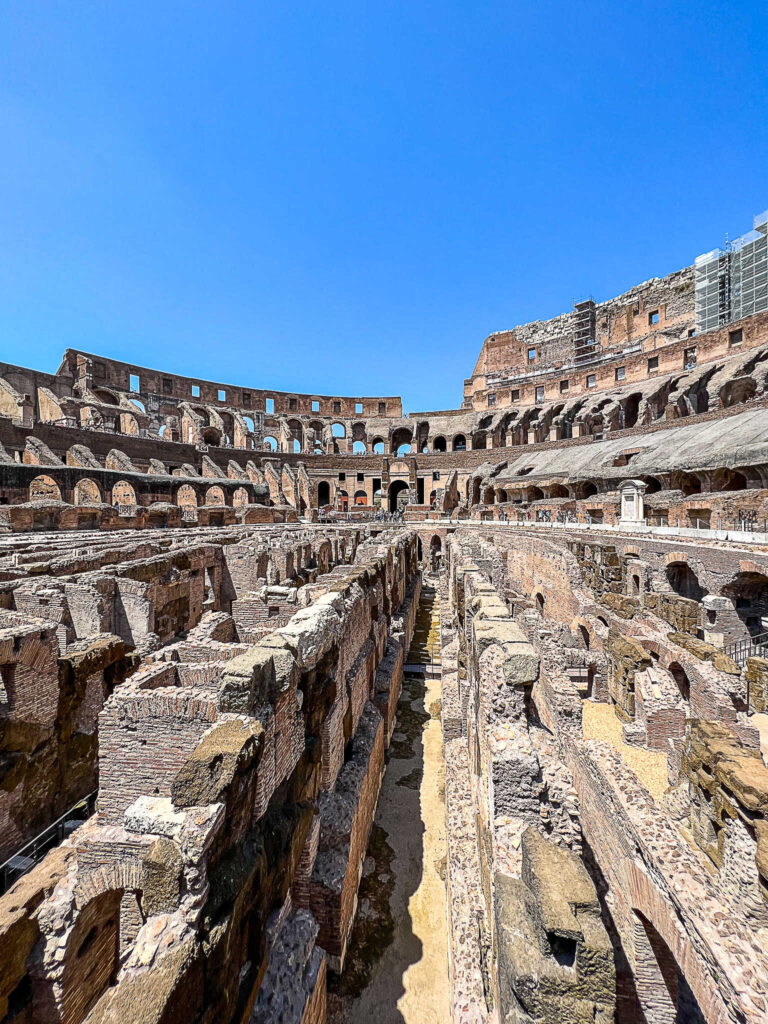

One of my most important tips for visiting the Colosseum is you should budget a minimum of two hours to spend exploring. If you’re on a walking tour, you can ask your guide how long the tour is expected to run, especially if it includes walking around Palatine Hill and parts of the Roman Forum.
I would also plan for at least an additional half-hour once your tour is over to walk around the Colosseum on your own and spend more time in the areas that really interest you.
Accessibility at the Colosseum
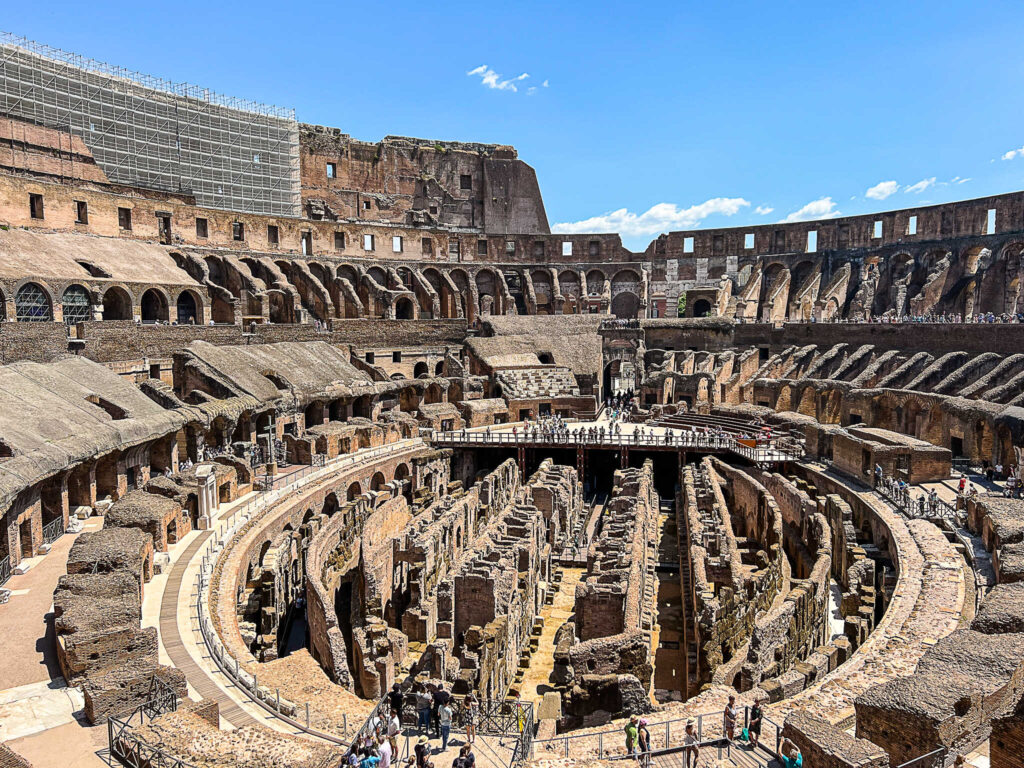
Despite its age, the Colosseum has relatively good accessibility. There are accessible toilets, and audio guides are also available. There are also ramps to access the main level, and an elevator to take you up to the second floor. You can read more about the Colosseum’s accessibility features here.
However, as a reminder, ancient sites like the Colosseum and Forum have cobblestones and uneven floors that can be treacherous, especially when it rains.
Once you’ve entered the Colosseum, you don’t need to worry about getting lost since the inside is well-signed, and if you’re on a guided tour, you can ask your tour guide for more information.
Tips for Entering the Colosseum

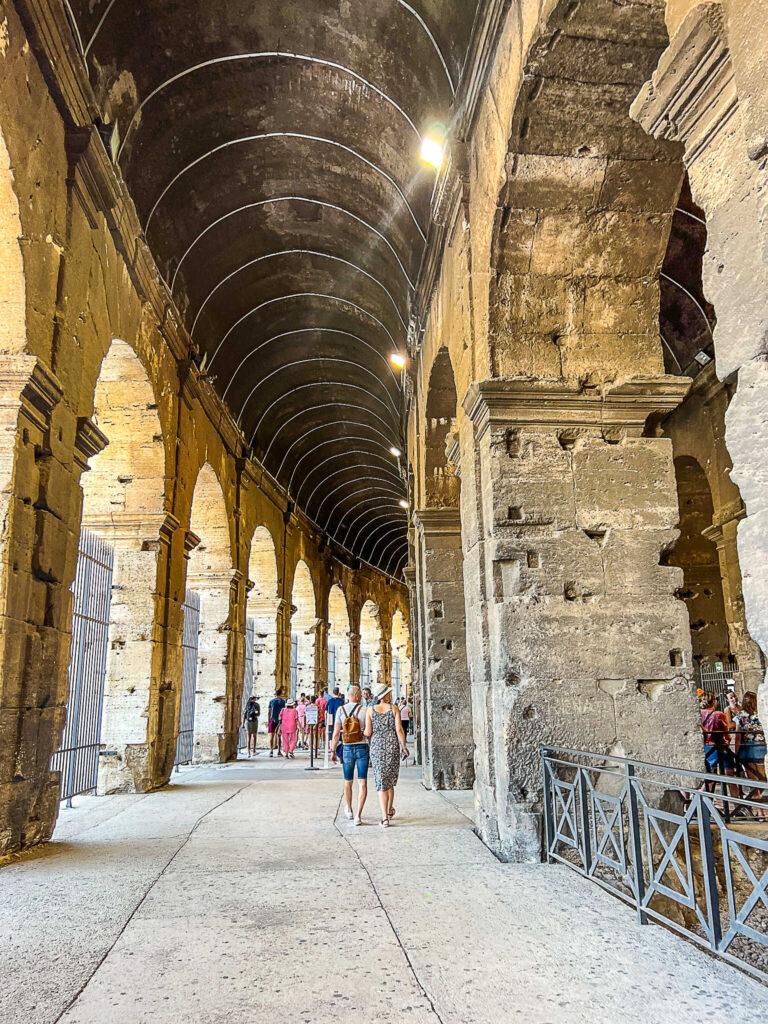
The Colosseum is a major tourist attraction, which means security is a significant concern. Before entering the Colosseum, small bags, purses, and equipment will be checked through a security screening with metal detectors.
Large backpacks, luggage, and tripods are not allowed inside the arena. Other prohibited items include alcoholic beverages, aerosol cans, selfie sticks, and bulky items.
Areas to See Inside the Colosseum
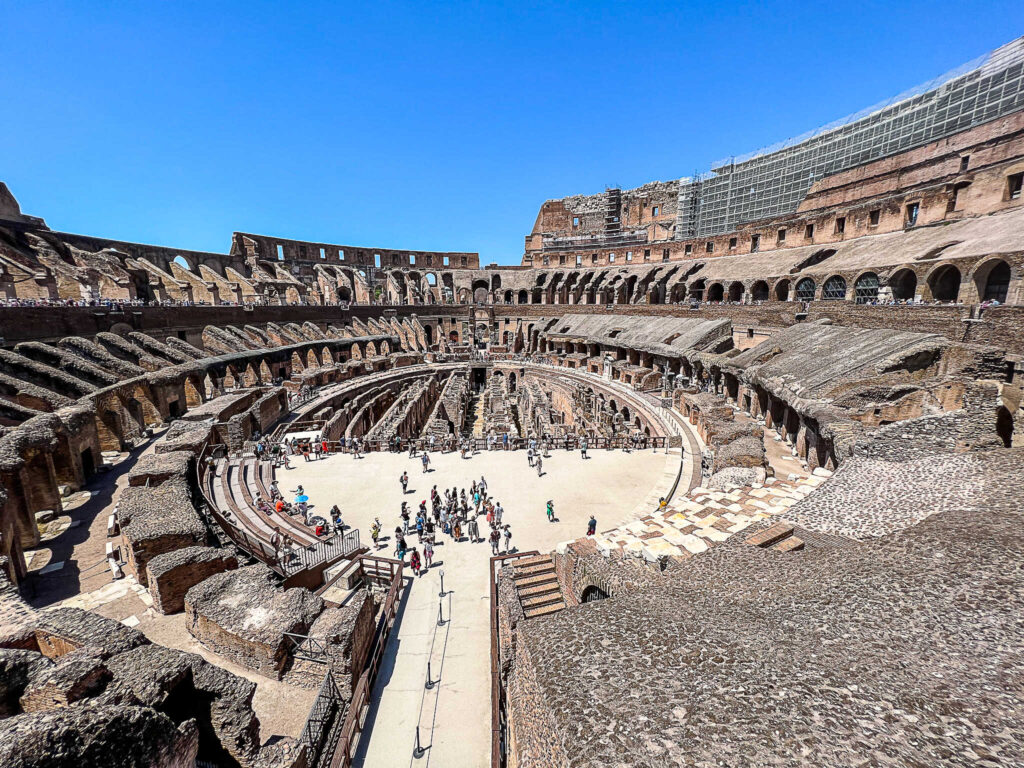
Measuring 180 meters by 150 meters by 55 meters, the arena floor is the main area; here, you can stand where the Gladiators stood, see the Emperor’s seats, and glimpse the underground area dug out just below the arena.
Fun Fact: The word “arena” used to be the Roman word for the sand they covered the ground with inside an ancient amphitheater. Now, the whole floor level is called an arena.
There were four different seating tiers for the 50,000 to 80,000 spectators inside the stadium. The Emperor’s podium was at the same level as the games. The upper levels were occupied by men, then enslaved people, and the highest level was reserved for women.
There also used to be a retractable roof managed by Roman sailors.
The underground part of the Colosseum is where props and animals were kept, and the gladiators waited to enter the arena. There were three levels to the underground chambers that enslaved people managed, which were very dangerous due to the exotic, wild animals kept underneath the arena floor for the fights.
Landmarks to See Near the Colosseum
The Colosseum is surrounded by several other impressive and famous monuments, many of which you’ll see included on a guided tour of the Colosseum.
Arch of Constantine
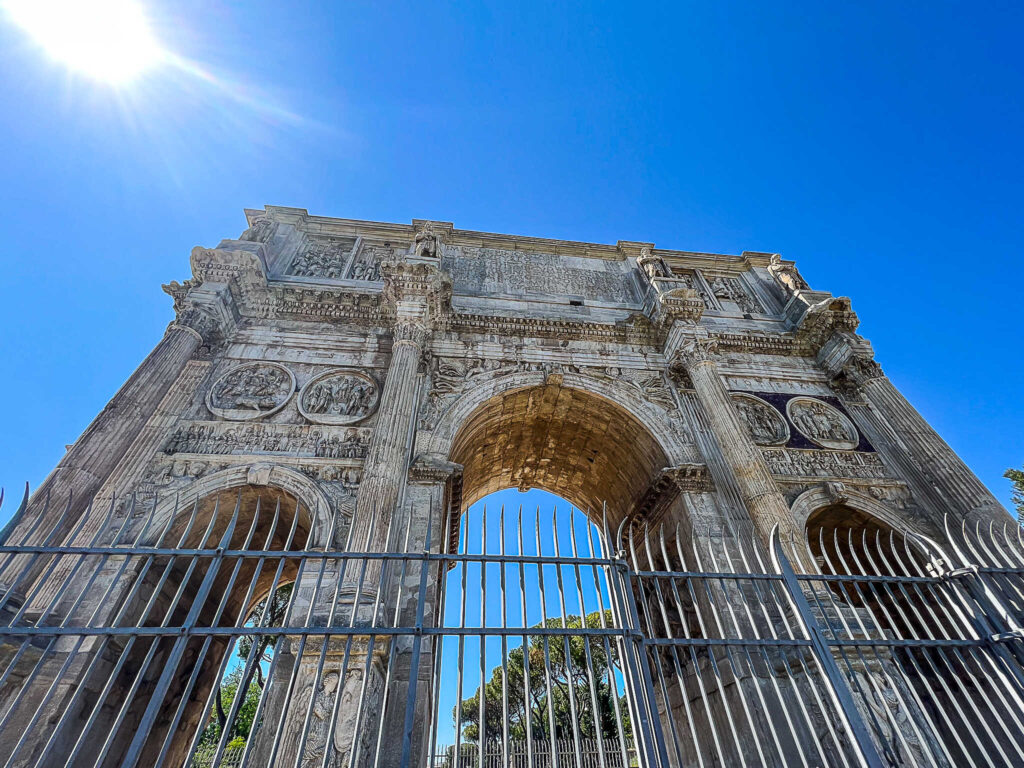
Built in 312 C.E. after winning a significant battle in Rome, the Arch of Constantine is a triumphal arch dedicated to Emperor Constantine the Great, the first Christian ruler of the Roman empire. Constructed using white marble, it sits right next door to the Colosseum, and you don’t need any pre-purchased ticket to view it.
The Domus Aurea

The Domus Aurea is the ruins of Roman Emperor Nero’s grand palace, built in 68 A.D. Although Parco del Colle Oppio e delle terme di Traiano, the park the ruins are in, is open to the public, these ruins are only accessible on a guided tour.
The Roman Circus
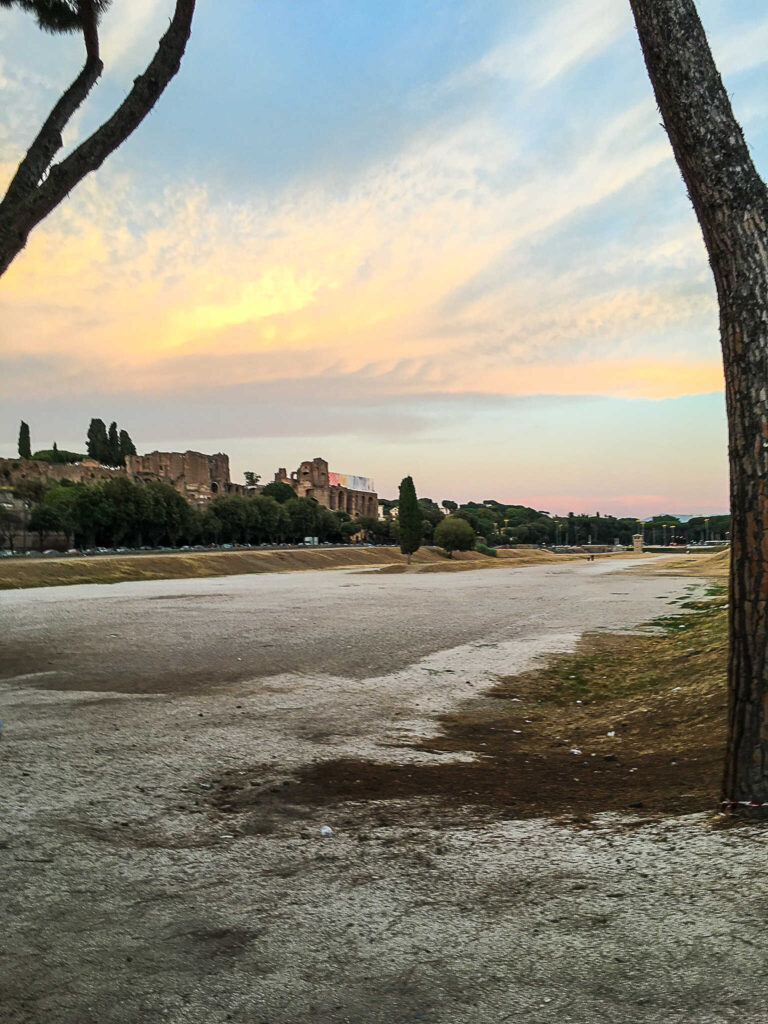
Also called the “Circus Maximus,” the Roman Circus is what remains of an ancient charioteer’s arena. Scholars believe the arena could seat up to 150,000 spectators for events in its prime years.
Palatine Hill
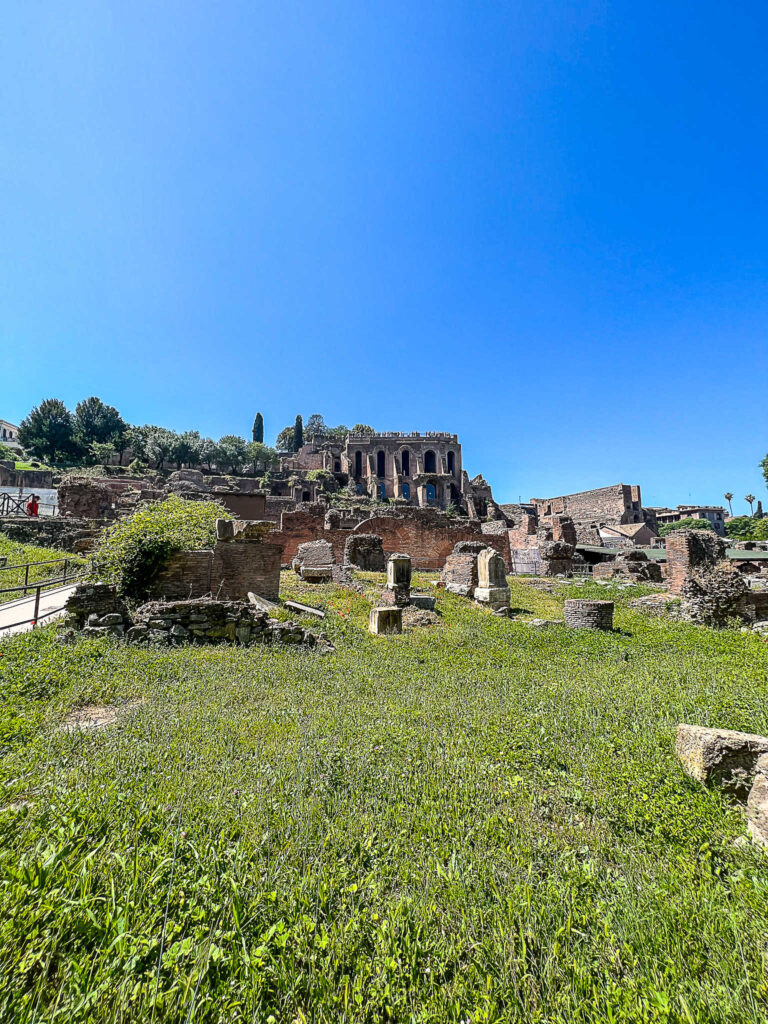
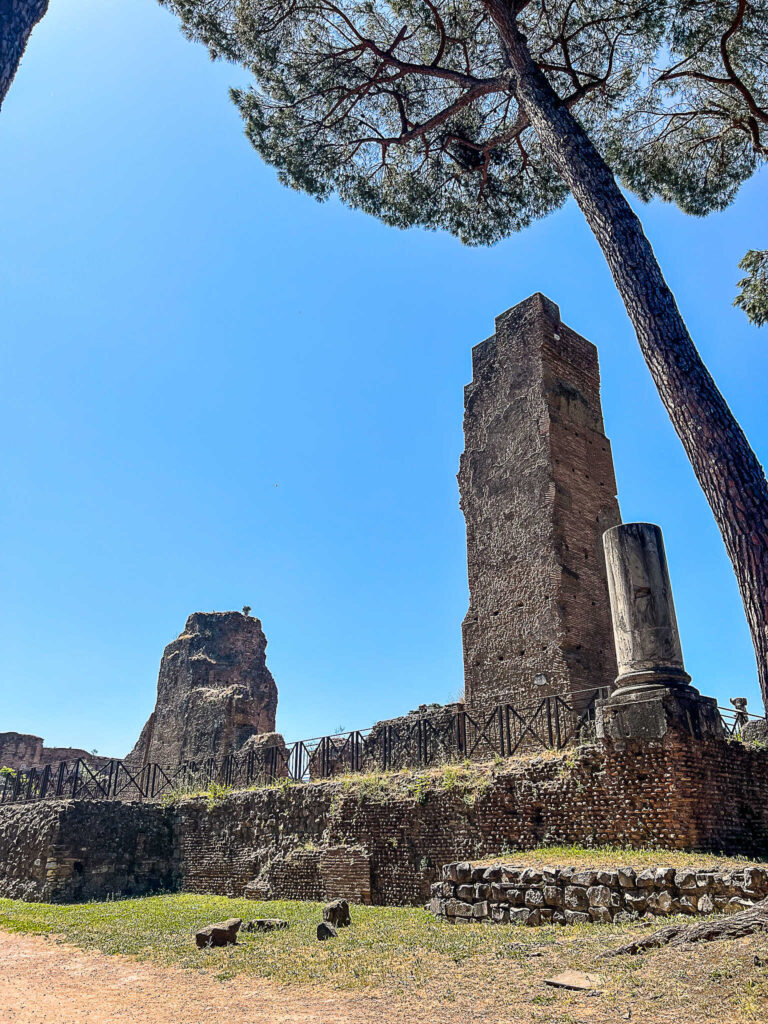
One of the seven hills of Rome, Palatine Hill houses the ruins of many ancient Roman buildings and temples. Artifacts show original Romans lived here as far back as the 9th century B.C.E.
Each Emperor of Rome built their own palace here on this hill during the Imperial period. Entrance is included in the same tickets as the Colosseum, and you’ll be met with stunning views of the hill’s ruins and the surrounding areas of the Forum.
Roman Forum


The center of life in ancient Rome existed within the Roman Forum or Foro Romano. Today, you can see the ruins of the large public square where all facets of life were conducted–trade, politics, and processions.
Admission into the Roman Forum and its various archeological remains is included with the same entry ticket as your Colosseum entrance.
Altar of the Fatherland
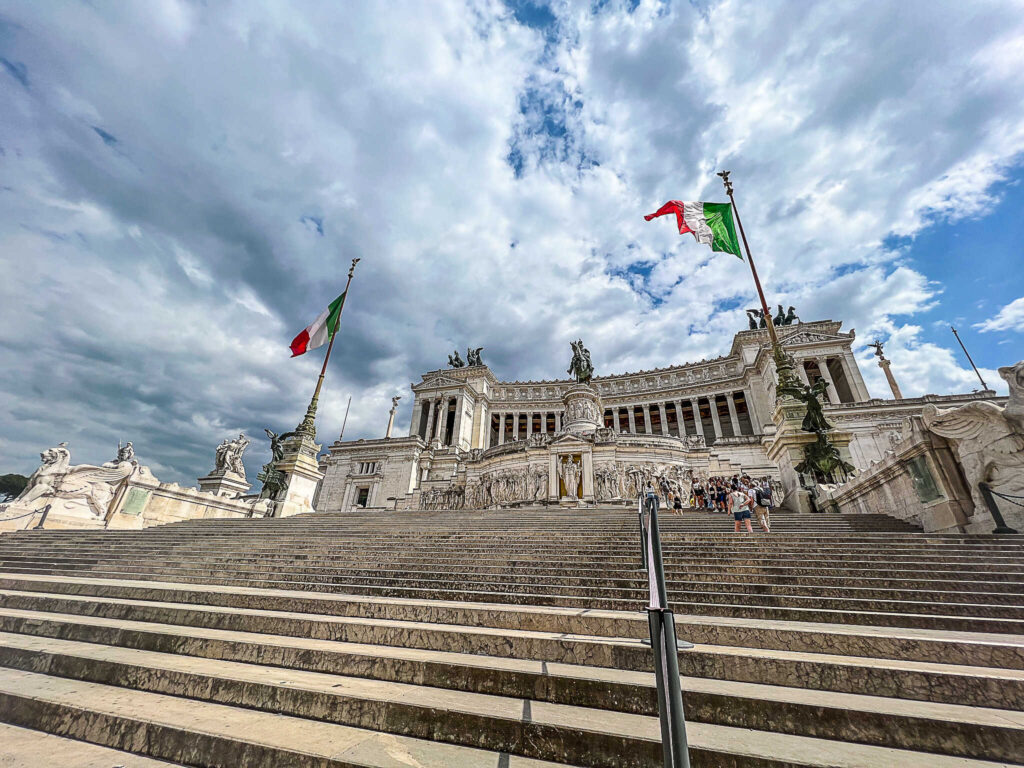
At the end of Via dei Fori Imperiali in Piazza Venezia, the Altar of the Fatherland (Altare della Patria) stands proudly as a monument commemorating the first King of Italy after the country’s unification, Victor Emmanuel II, and fallen World War I soldiers.
The back of the building is visible from the Roman Forum. You can take an elevator to the roof for panoramic views over the whole Forum with the Colosseum in the background.
Read More
- Everything I Wish I’d Known Before Moving To Rome, Italy
- The Cost of Living In Rome, Italy: A Local’s Breakdown
- Your Guide to Teaching English in Italy with ACLE
Tips for Visiting the Colosseum
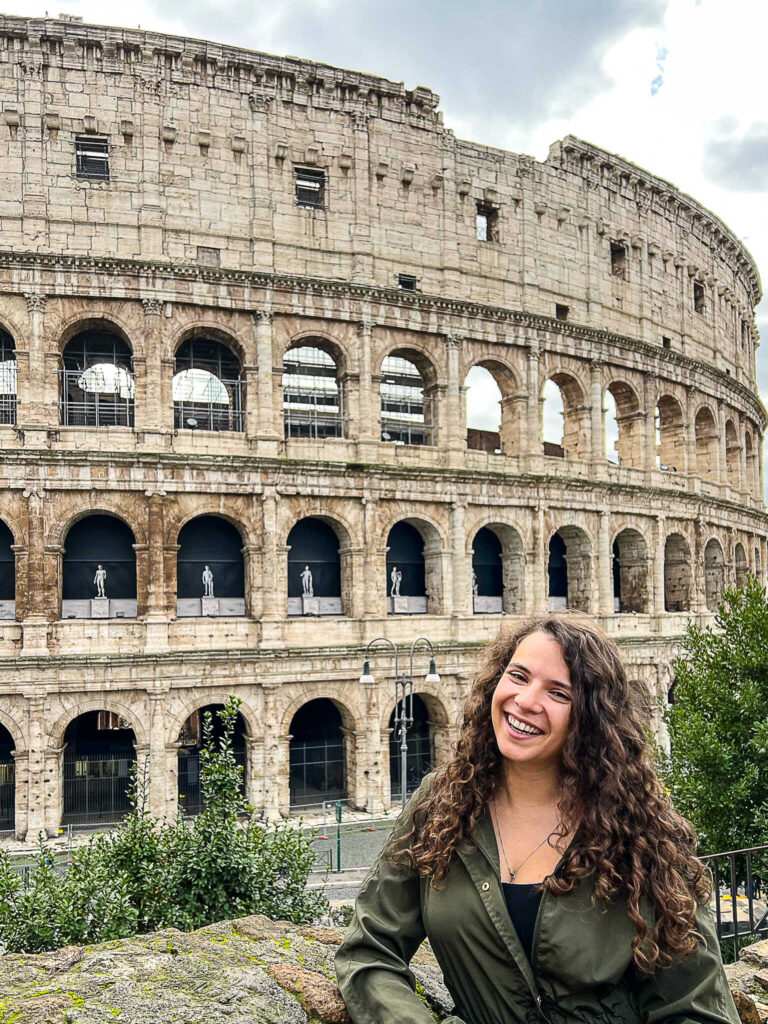
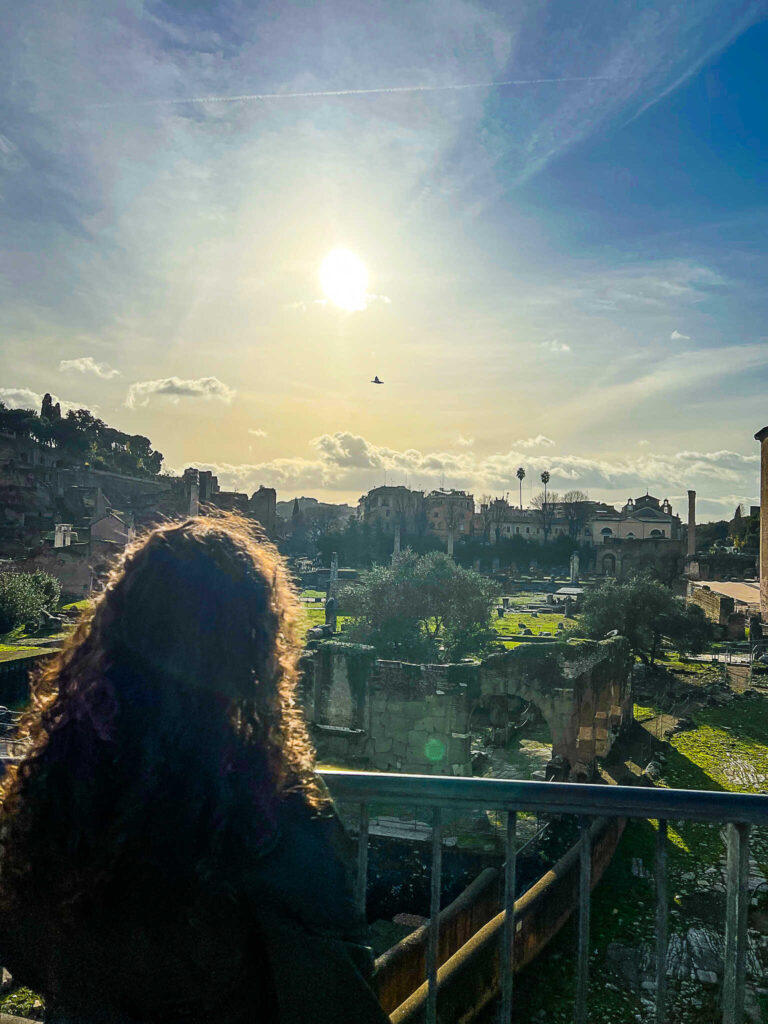
Do some research before you go
Even if you are taking a guided tour, it’s worthwhile to do some research before heading inside. These are my favorite texts and documentaries to learn more about the Colosseum and Roman Forum within the context of Ancient Rome:
- Non-fiction books: SPQR: A History of Ancient Rome by Mary Beard, Naked Statues, Fat Gladiators, and War Elephants: Frequently Asked Questions about the Ancient Greeks and Romans by Garrett Ryan
- Children’s Non-fiction books: The Roman Colosseum: The story of the world’s most famous stadium and its deadly games by Elizabeth Mann, The Roman Mysteries: The Thieves of Ostia series or The Roman Quests: Escape from Rome series, both by Caroline Lawrence
- Fiction books: The Light Bearer by Donna Gillespie, Beric the Briton, A Story of the Roman Invasion by G. A. Henty
- Documentary films & series: Colosseum – Rome’s Arena of Death, Colosseum: The Whole Story, Secrets of the Colosseum by PBS International
- Fiction movies: Gladiator (2000), Gladiators of Rome (2012), A Funny Thing Happened on the Way to the Forum (1966)
To avoid pickpockets, pay attention to your surroundings
If you’re trying to find tips for visiting the Colosseum, this is important. Always pay attention to your surroundings. Throughout all my travels in Italy, I’ve never had anything stolen.
Although it’s a reasonably safe city, be careful of pickpockets who lurk around the site’s entrances. Thieves prefer stealing items during crowded hours when there are more people around.
Don’t let your wallet out of sight or leave your valuables unattended, and in general, stay vigilant. If it gives you peace of mind, try carrying an anti-theft backpack to protect your belongings.
Also, avoid talking to strangers, especially if they try selling you tickets or offering tours. Just politely decline their offers and move on.
Early morning is the best time for photography
Although you can’t fly a drone for photography in Rome, you should still schedule any photography sessions in the morning when fewer people are around. Yes, you’ll have to wake up a little earlier than you want, but the beautiful early morning sunlight will make the effort worthwhile.
Via Nicola Salvi is a raised street opposite the Colosseum that connects to Parco del Colle Oppio e delle terme di Traiano. If you walk along the street near the park, you’ll find this is a perfect spot for taking photos to capture you with the Colosseum.
Check the weather forecast before leaving for your tour of the Colosseum
You’ll be outdoors the whole time while visiting the Colosseum, so dress accordingly. In summer, make sure you have light clothing, a hat, and sunscreen–the heat can get brutal in Rome depending on the time of day! In the winter months, make sure to bring a coat and scarf and a hat, gloves, and winter boots.
You may also want to consider bringing an umbrella or raincoat if there’s a chance of rain since there’s no cover once you are inside.
Thankfully, unlike visiting significant churches in Rome like St. Peter’s Basilica or the Sistine Chapel, there isn’t a dress code to see the Colosseum.
Bring a reusable water bottle with you
One of the fantastic parts about living in Rome is how easy it is to find access to water fountains. Called nasone, they still use the Ancient Roman aqueducts to transport free, clean drinking water all around Rome.
Since you’ll be outside in the sun, an essential tip for visiting the Colosseum is to bring a bottle of water inside with you. Keeping plastic water bottles with you on your trip will save you money and ensure you have water when you need it most.
Make sure to come back at night
For an entirely different experience, simply walk around the Colosseum around sunset when it becomes illuminated against the night sky.
Many famous sights in Rome, like the Colosseum, the Trevi Fountain, and St. Peter’s basilica, look absolutely stunning, all illuminated at night.
Read More
- Venice vs Rome: Which Italian City Should You Visit?
- Your Guide for One Day in Pisa, Italy
- Festive Things to do in Bolzano, Italy at Christmas
- The Ultimate Venice Bucket List: 55+ Things to do in Venice, Italy
- The Best Venice City Pass: An Ultimate Venice Pass Comparison Guide
When can you visit the Colosseum for free?

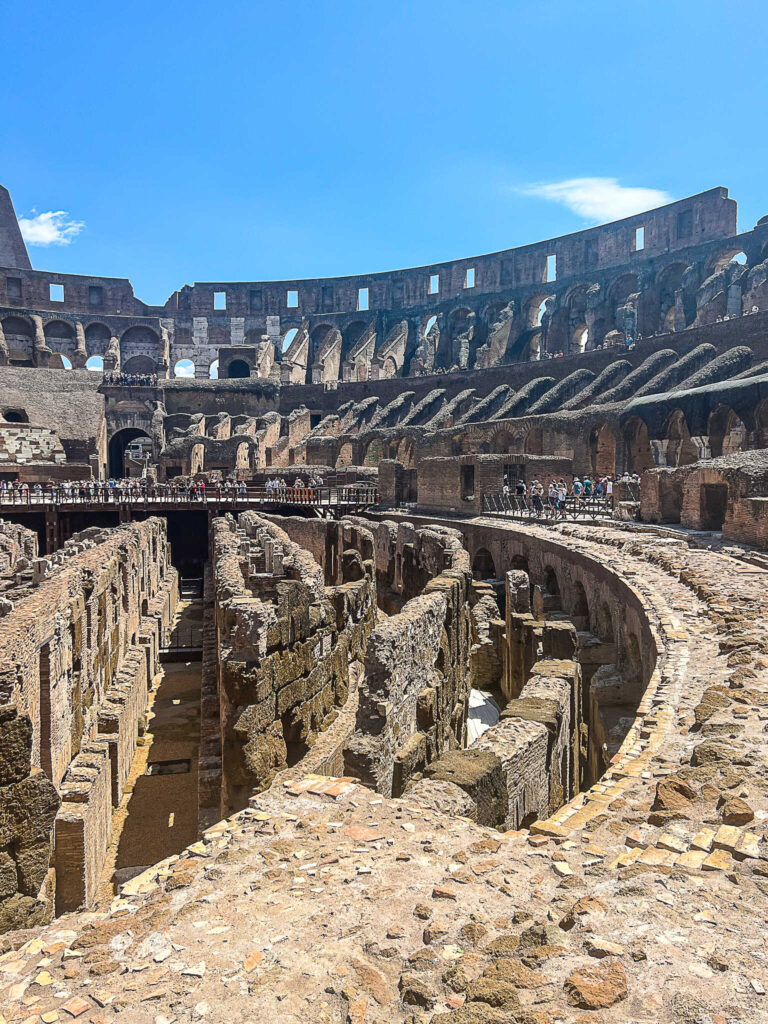
Like with all public museums in Italy, entry to the Colosseum, Roman Forum, and Palatine Hill is free on the first Sunday of every month.
However, since this is one of the most famous landmarks in Italy, expect to be waiting in some very, very long lines to get inside.
What to do After Visiting the Colosseum

After walking around outside learning about ancient times, you deserve to grab a drink or a whole meal!
I’ve been to Naumachia Ristorante several times and have always had a great meal. Although it’s only a few blocks from the Colosseum, you’re outside of the “tourist trap” zone, and if you’re sitting outside, you can still see it at the end of the street.
If it’s late enough in the afternoon to grab aperitivo, the cost of a drink often includes some savory snacks. The best view of the Colosseum is from a restaurant with a rooftop terrace, like the rooftop at Palazzo Manfredi, just around the corner in this ancient city.
If you want to explore more of Rome, take a bus or the metro to the Vatican Museums in the Vatican City. You can also walk to other popular attractions like the Trevi Fountain, Villa Borghese, or the Pantheon.
What are your top tips for visiting the Colosseum in Rome?
